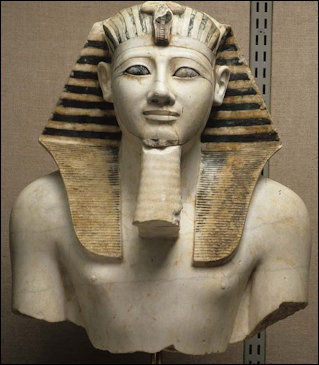On April 24, 1479 BCE, Thutmose III ascended to the throne of Egypt, causing power to shift to… his stepmother Hatshepsut. It was the result of some political drama from his father’s reign, Thutmose II.
You see, Thutmose II had left no proper heir to the throne of Egypt, which is to say, a son by his royal queen wife. He did, however, have a son by one of his concubines. Normally, the pharaoh’s son would be first in line for the throne. However, as he was only the son of a concubine, his degree of royalty was less than it would otherwise be. His stepmother Hatshepsut had a solid claim to the throne as well because she was Thutmose II’s royal queen wife, his primary wife. The fact that clinched the strange power-sharing deal was the fact that whoever had the stronger claim, Thutmose III, was simply too young to rule.
So the young heir and his stepmother were declared to be co-regents, with theoretically equal ranks and powers. In practice, however, Hatshepsut held all the power, and young Thutmose III was co-pharaoh in name only. She was the second historically confirmed female pharaoh after Sobekneferu. Her reign was a prosperous one for Egypt.
As Thutmose III grew older, Hatshepsut handed him more responsibilities, such as commanding her armies, but he did not truly come into his power until after she passed away. His feelings on the power-sharing arrangement were possibly made apparent by the way all her monuments were defaced during his reign and almost all records of her expunged.

